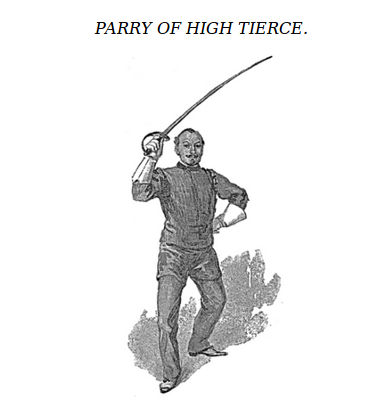High Tierce
From Scholar Victoria
The parry of High Tierce stops Cut 7.
Execution
- Raise the hand to chin/ear level in the form of tierce.
- Receive the cut on the forte as near to the shell as possible.
